|
BULB LOG 37 -- 8th September 2004
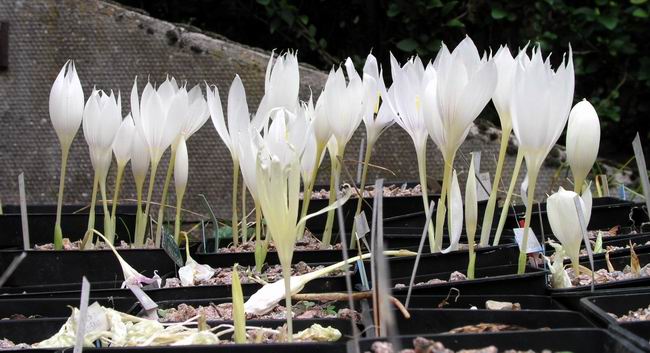
Crocus vallicola in frame
I have spoken about Crocus vallicola in recent logs but I have not shown you a picture of it in the frame where it looks great, en masse. It is amazing to see the number of hoverflies they attract, especially when the sun shines.
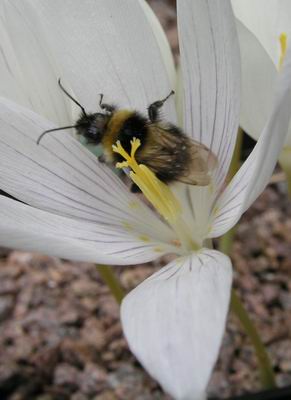
Crocus pollinator
Bees are also attracted to crocus and of course they also do the job of pollinating. I would normally be out with my paint brush transferring the pollen from anther to stigma but there is no need for that this year. The warm sunny days we are getting just now are not only a bonus to us but also wonderful for these beneficial insects.
On the 1st of September I give the bulbs the 'first storm' and people often ask "why then?"
Well, apart from the fact that this is the time many of the bulb regions of their Mediterranean home land are also receiving the first rains of autumn; the bulbs want to grow.
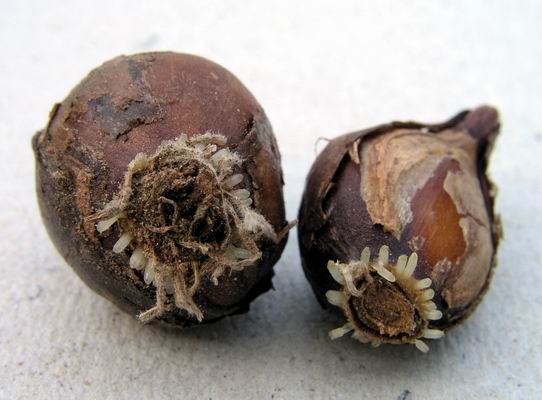
Narcissus bulb roots
These narcissus bulbs have been stored in dry sand in a plastic box in our potting shed and you can see that the roots are already exploring for moisture. Bulbs seem to have a built in clock that triggers them into growth by slowly pushing out roots. If there is water available the roots will grow rapidly, if not root growth will remain slow.
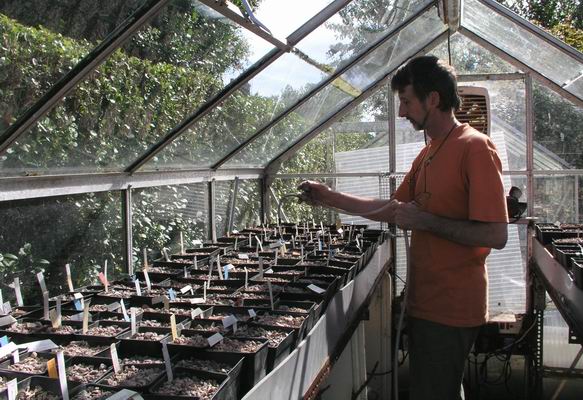
First storm
Watering the bulbs sounds like a simple job but great care must be taken to ensure
that both the pots and plunges are soaked completely.
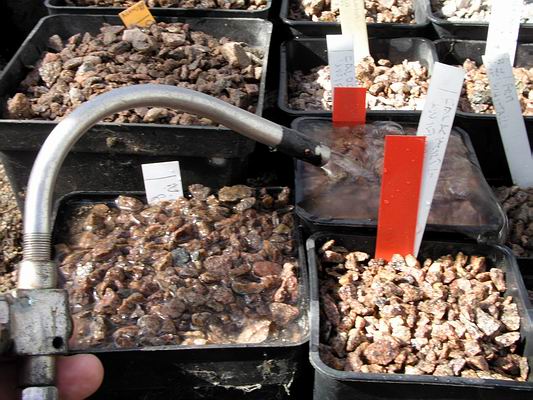
Flood plastic
I use a hose pipe with a small valve that I have attached to make it easy to control the flow and direction of the watering. I go round all the plastic pots flooding each one in turn. By the time I have got to the end, the surface water on the first pots to receive the water has drained away and I repeat the process.
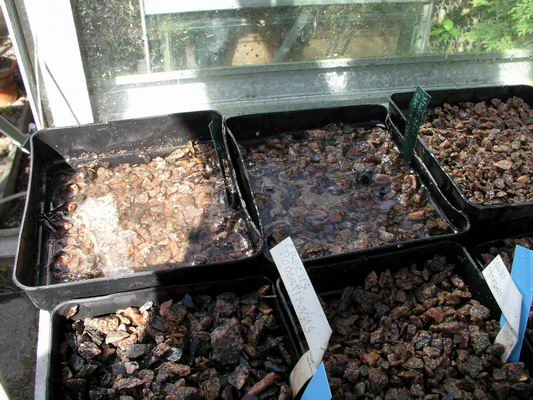
Draining plastic pots
I will go through this process three or four times until I am sure that the potting compost is watered all the way through.
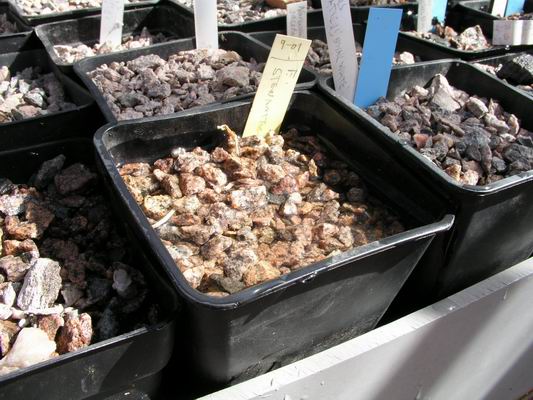
Level pots
While I am watering I also make sure that the pots are all as level as possible. If a pot is at a slight angle the water will run down the low side, which, through the growing season, will be slightly wetter than the high side and this can lead to problems.
The sand bed that the plastic pots sit on will become well watered by the water draining through the pots.
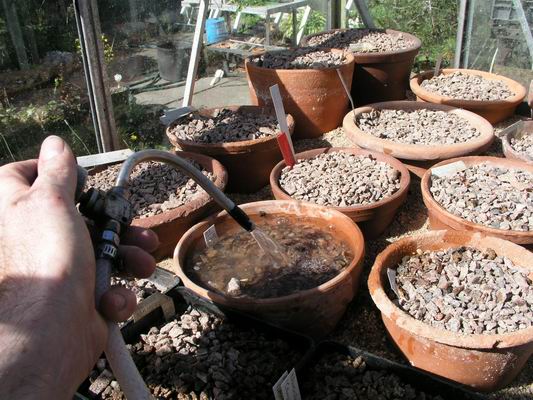
Clays
The same regime is applied to the clay pots watering them several times by flooding the pots and allowing them to drain. I water the sand plunge between the pots as I go.
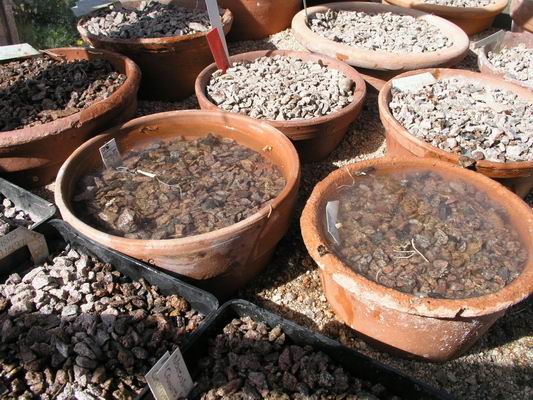
Flooded clays
When I flood the clay pots for the second or third time, I like to see bubbles rising, this will indicate that the water has penetrated the compost fully.
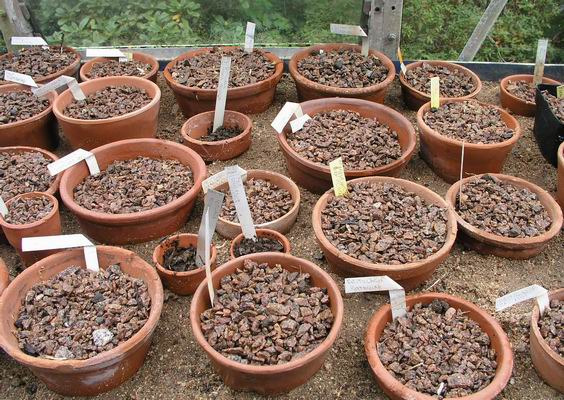
Plunged clay pots
Once the clay pots are all well watered and drained the plunge looks well watered.

Sand plunge
From this picture, where I have removed a pot, you can see that even though the sand looked well watered, it is only the top 5 cms and the area below the drainage holes that is wet; the bit in-between is still very dry. Having ensured that the pots are well watered I now go around the sand plunge to make sure that it is also evenly wet throughout, removing the odd pot to check. It is vital that the sand is evenly wet to get that exchange of moisture through the porous walls of the clay pot which helps even out extremes of wet and dry within the pot. If you are not sure that you have watered well, then do it again. If you have a free draining compost you cannot over water, at this stage, but you can under water and have the bulbs struggling in a dry compost.
Having done the first storm my attention turns to getting the bulbous seed sown. This is the optimum time for sowing seed of crocus, erythronium, fritillaria, narcissus, etc.
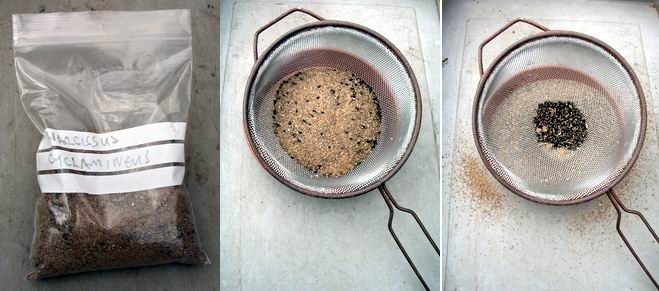
Narcissus seed
This is the Narcissus seed that I showed in a previous log being stored in dry sand. It is a simple job to pass it through a fine mesh to separate the seed out ready to sow and it is in perfect condition, not too dried out like it would be if stored in air.
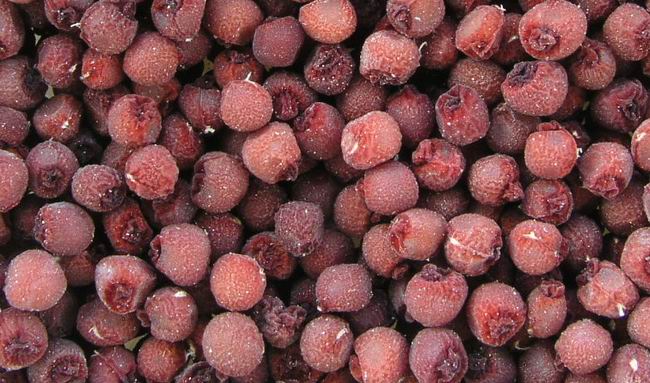
Crocus seed
This is such a busy time between watering the bulb houses and sowing the seed but I still find time just to enjoy the beauty of nature by examining the seeds in detail.
^ back to the top ^
|

